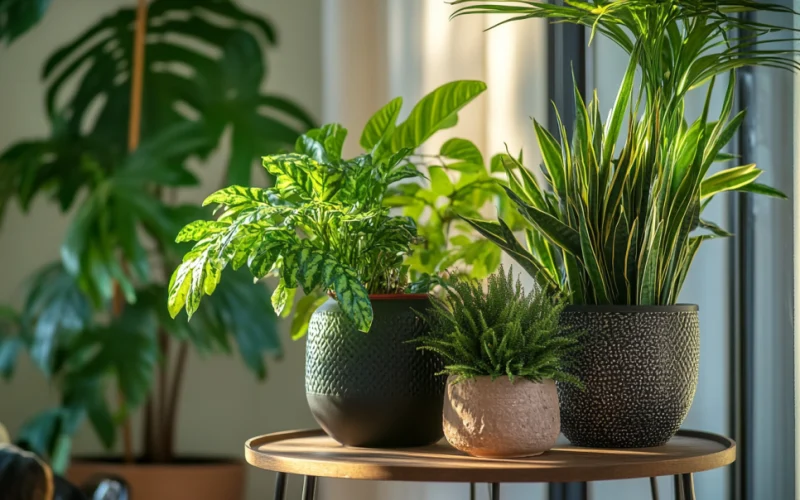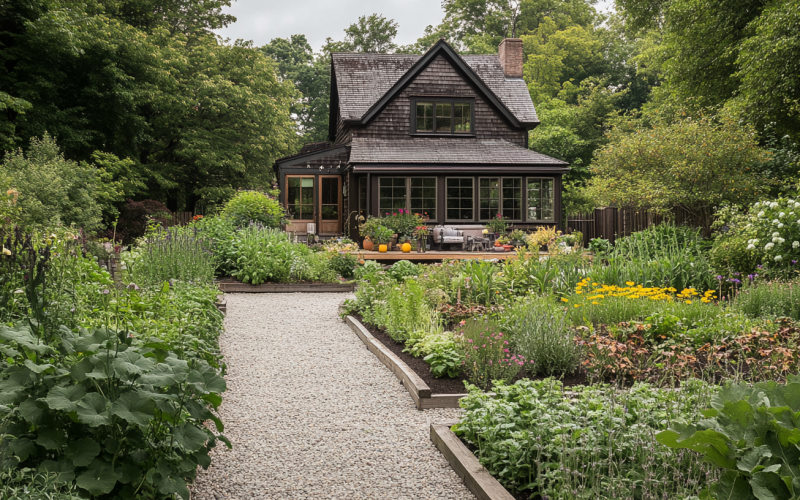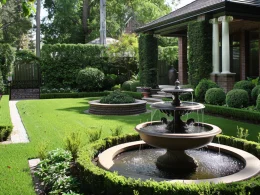Indoor plants have become popular in many homes, bringing nature and freshness to any room.
This post offers valuable insights for those considering adding greenery to their living spaces. It covers various indoor plants, their names, and basic information about each.
Whether someone is new to plant care or has a few green companions, there’s something here for everyone.
The post explores a mix of common and lesser-known plants, from low-maintenance options to those requiring more attention.
You will discover different types of foliage, flowering plants, and even some air-purifying varieties.
By the end of this guide, plant enthusiasts might find their next leafy companion to brighten up their home.
Stunning Indoor Plants for Your Home
Indoor plants can transform your home’s look and feel. They come in various shapes, sizes, and care needs.
Let’s explore some eye-catching options for your space.
1. African Violet (Saintpaulia)
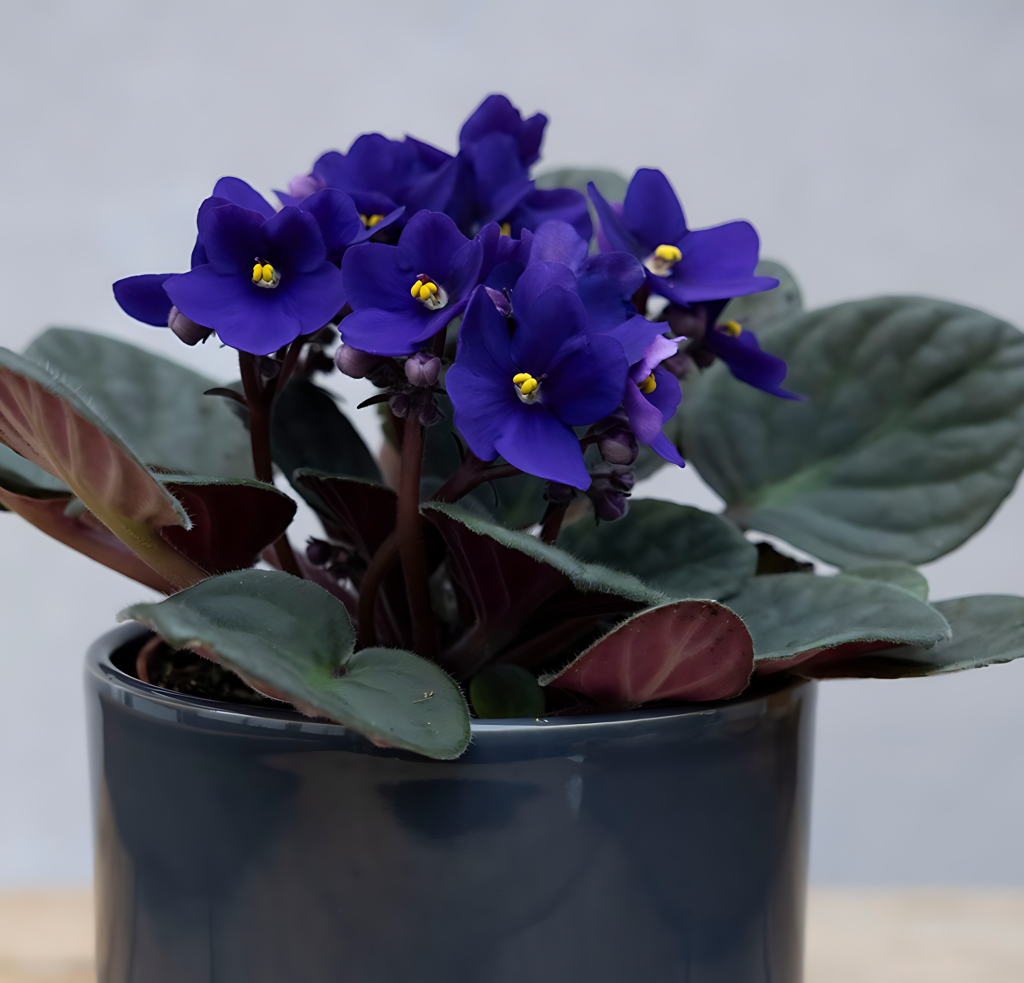
The African Violet is a charming and compact houseplant known for its delicate, colorful flowers and soft, velvety leaves.
It’s a favorite among indoor gardeners for its ease of care and ability to bloom throughout the year.
| Scientific Name | Saintpaulia |
| Origin | Tanzania, Eastern Africa |
| Light | Bright, indirect light |
| Temperature | 65-75°F (18-24°C) |
| Watering | Moderate, keep the soil moist |
| Soil | Well-draining, African Violet potting mix |
Fun Facts
- African Violets can bloom multiple times a year with proper care.
- They are safe for pets, making them a great choice for households with animals.
- The plant was named after Baron Walter von Saint Paul, who discovered it in Tanzania.
2. Monstera Deliciosa (Swiss Cheese Plant)
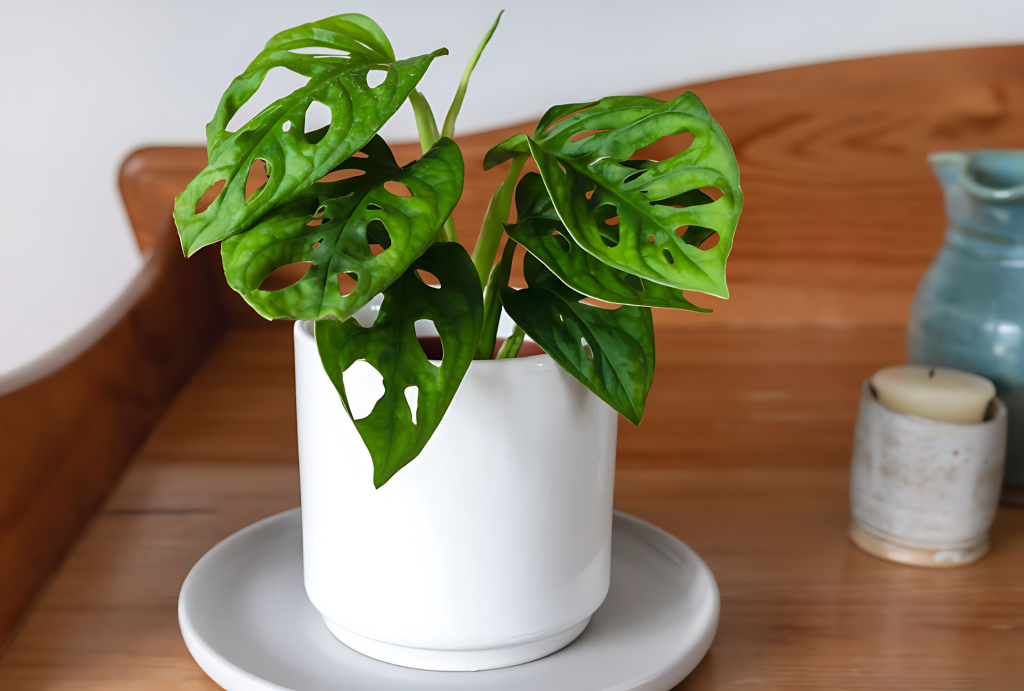
Monstera Deliciosa is renowned for its large, fenestrated leaves that resemble Swiss cheese.
This tropical plant adds a bold, exotic look to any indoor space and is prized for its rapid growth and easy propagation.
| Scientific Name | Monstera Deliciosa |
| Origin | Central and South America |
| Light | Bright, indirect light |
| Temperature | 60-80°F (16-27°C) |
| Watering | Regular allow soil to dry slightly between watering |
| Soil | Well-draining, peat-based potting mix |
Fun Facts
- Monstera Deliciosa can produce edible fruit in its natural habitat.
- The plant’s iconic holes in the leaves are thought to allow light to reach lower leaves and withstand strong winds.
- It’s known as the “Swiss Cheese Plant” due to the unique perforations in its leaves.
3. ZZ Plant (Zamioculcas Zamiifolia)
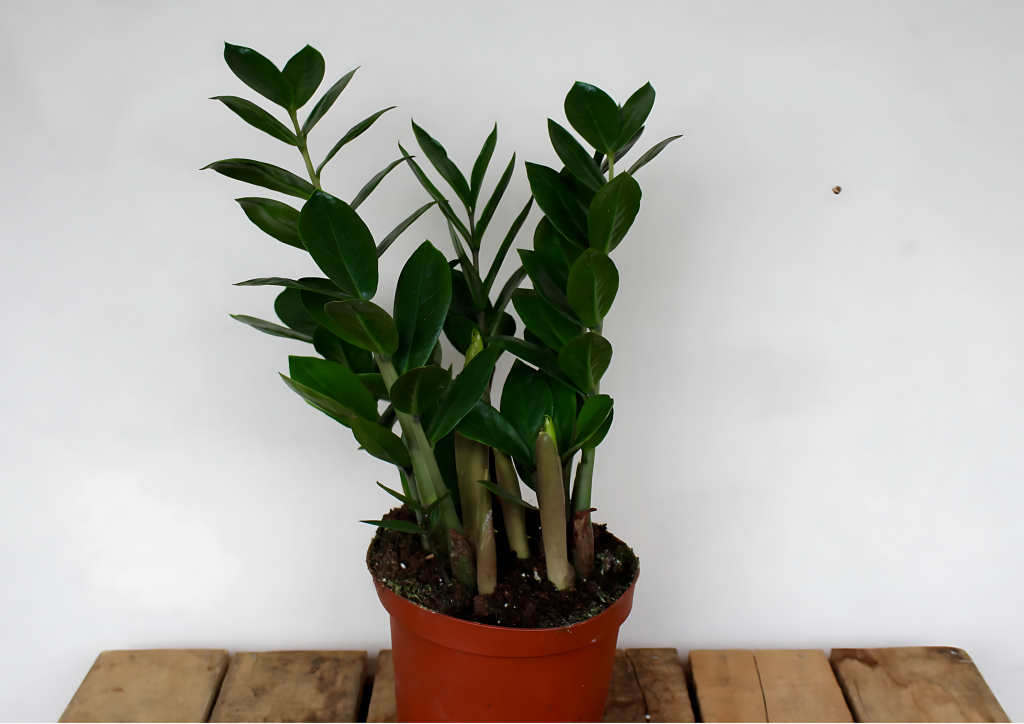
The ZZ Plant is a hardy, low-maintenance houseplant with glossy, dark green leaves that grow in a striking, upright form.
It’s popular for its ability to thrive in low light and withstand neglect.
| Scientific Name | Zamioculcas Zamiifolia |
| Origin | Eastern Africa |
| Light | Low to bright, indirect light |
| Temperature | 60-75°F (15-24°C) |
| Watering | Infrequent, allow the soil to dry completely between watering |
| Soil | Well-draining, cactus or succulent mix |
Fun Facts
- The ZZ Plant is known for its air-purifying qualities and ability to remove toxins.
- It can survive months without water, making it ideal for busy or forgetful plant owners.
- The plant’s rhizomes store water, helping it endure prolonged periods of drought
4. Golden Pothos (Epipremnum Aureum)
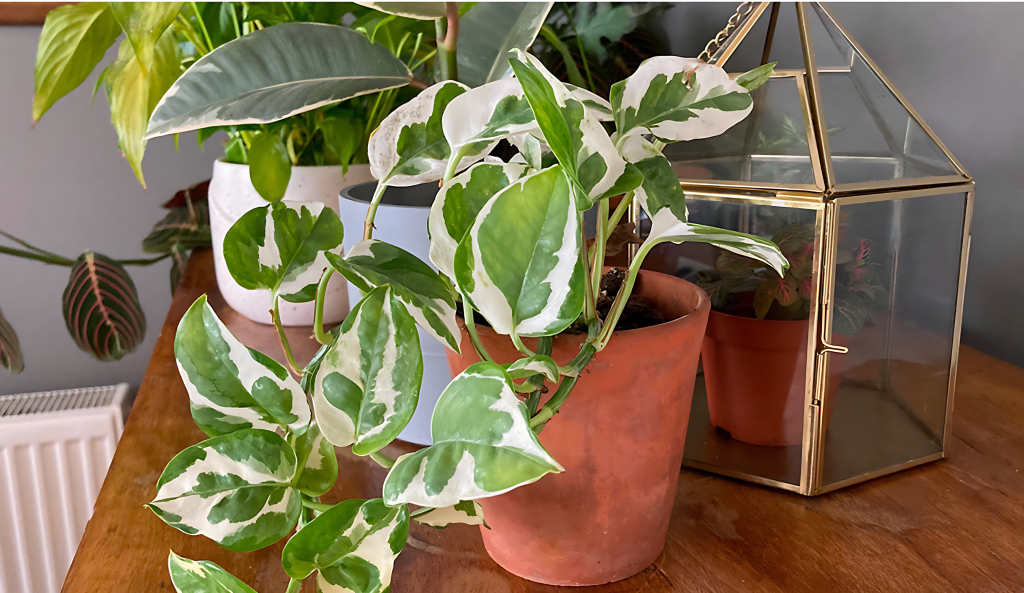
Golden Pothos is a versatile and easy-to-grow houseplant with heart-shaped, variegated leaves.
Its trailing vines make it perfect for hanging baskets or as a climbing plant with proper support.
| Scientific Name | Epipremnum Aureum |
| Origin | Solomon Islands |
| Light | Low to bright, indirect light |
| Temperature | 65-85°F (18-29°C) |
| Watering | Moderate, allow the soil to dry between watering |
| Soil | Well-draining, general potting mix |
Fun Facts
- Golden Pothos is often called “Devil’s Ivy” because it can thrive in almost complete darkness.
- It effectively removes indoor air pollutants such as formaldehyde and benzene.
- The plant can grow up to 10 feet long indoors, making it a great statement piece for any room.
5. Spider Plant (Chlorophytum Comosum)
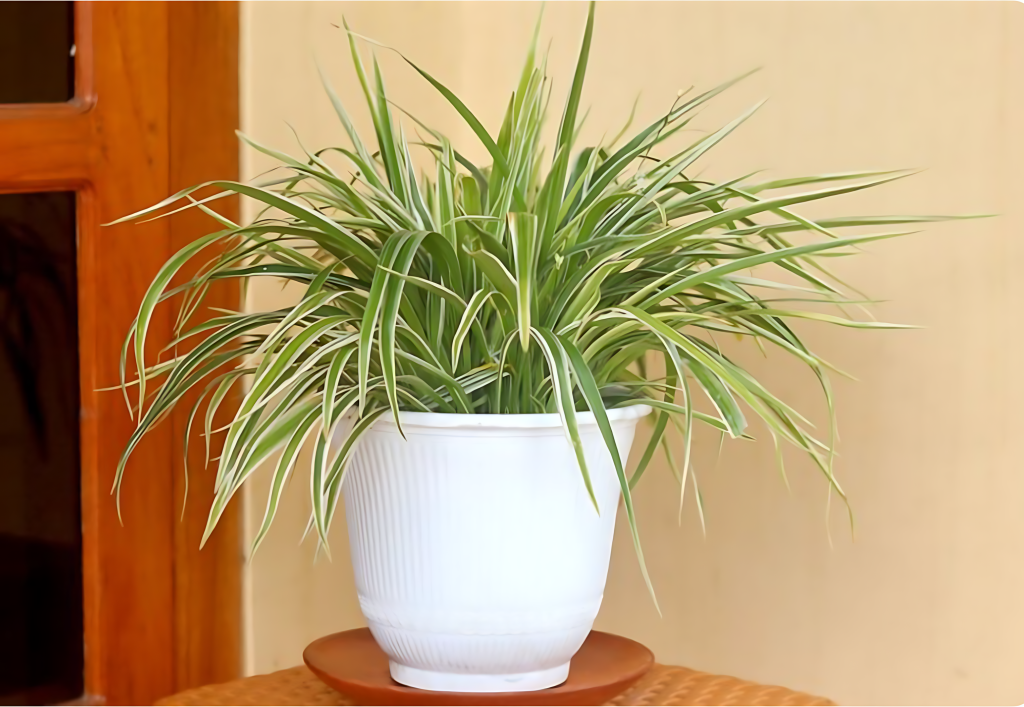
The Spider Plant is known for its long, arching leaves and small “spiderettes” or offshoots that dangle from the mother plant.
It’s one of the most adaptable and easy-to-grow houseplants.
| Scientific Name | Chlorophytum Comosum |
| Origin | South Africa |
| Light | Low to bright, indirect light |
| Temperature | 55-80°F (13-27°C) |
| Watering | Regular, keep the soil slightly moist |
| Soil | Well-draining, all-purpose potting mix |
Fun Facts
- Spider Plants are non-toxic to pets, making them a safe addition to any home.
- They are known to remove carbon monoxide and other toxins from the air.
- The plant can produce small white flowers in addition to its spiderettes.
6. Peace Lily (Spathiphyllum Wallisii)
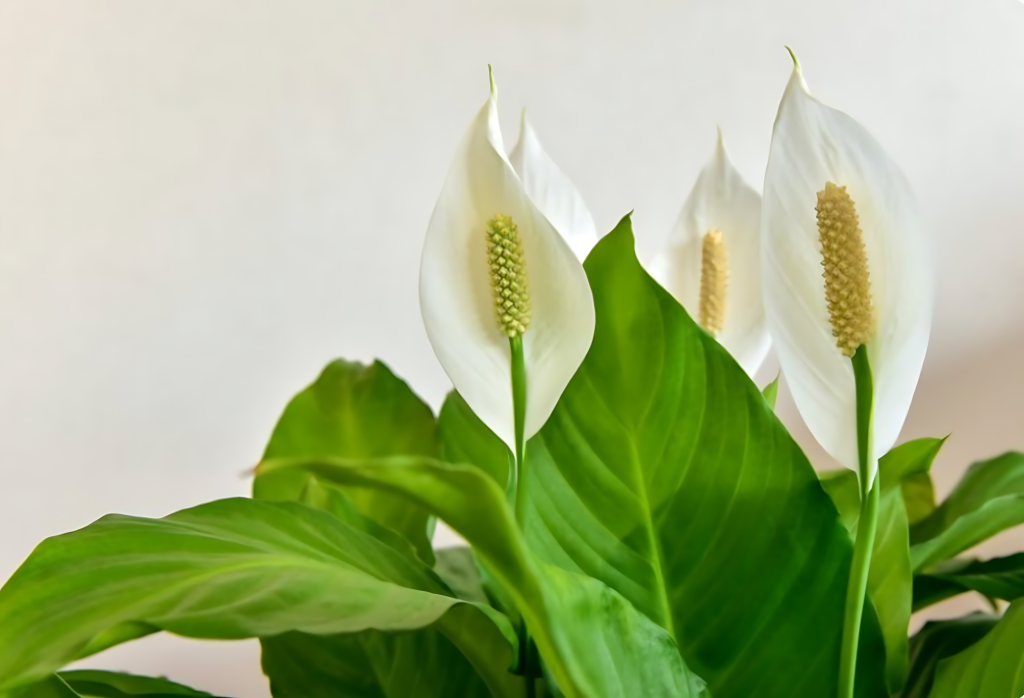
The Peace Lily is a popular indoor plant known for its lush, dark green leaves and striking white spathes.
It’s highly valued for its elegant appearance and air-purifying qualities.
| Scientific Name | Spathiphyllum Wallisii |
| Origin | Tropical Americas |
| Light | Low to bright, indirect light |
| Temperature | 65-85°F (18-29°C) |
| Watering | Keep soil consistently moist |
| Soil | Well-draining, all-purpose potting mix |
Fun Facts
- Peace Lilies are known to remove toxins like ammonia, benzene, and formaldehyde from the air.
- Despite its name, the Peace Lily is not a true lily.
- The plant can produce flowers throughout the year, particularly in the summer.
7. Fiddle Leaf Fig (Ficus Lyrata)
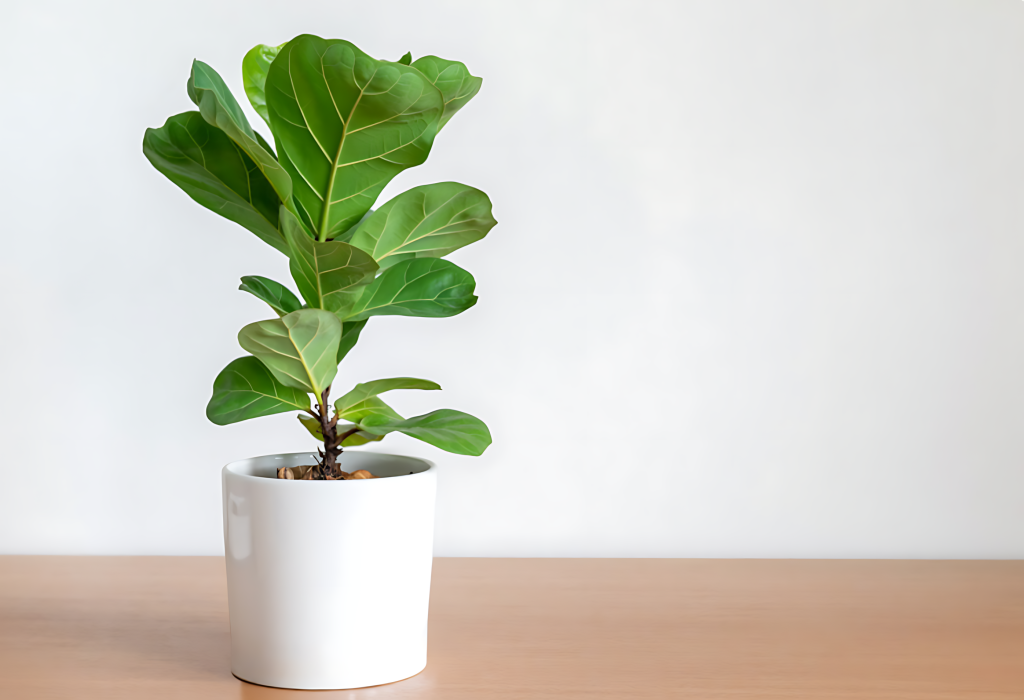
The Fiddle Leaf Fig is a statement plant with large, violin-shaped leaves that create a dramatic focal point in any room.
It requires some care but rewards with its striking appearance.
| Scientific Name | Ficus Lyrata |
| Origin | Western Africa |
| Light | Bright, filtered light |
| Temperature | 60-75°F (15-24°C) |
| Watering | Moderate, allow the top inch of soil to dry between watering |
| Soil | Well-draining, peat-based potting mix |
Fun Facts
- The Fiddle Leaf Fig’s large leaves can grow up to 18 inches long and 12 inches wide.
- It’s a favorite plant among interior designers for its bold and dramatic foliage.
- The plant can grow up to 6 feet or more indoors properly.
8. Bird of Paradise (Strelitzia Reginae)
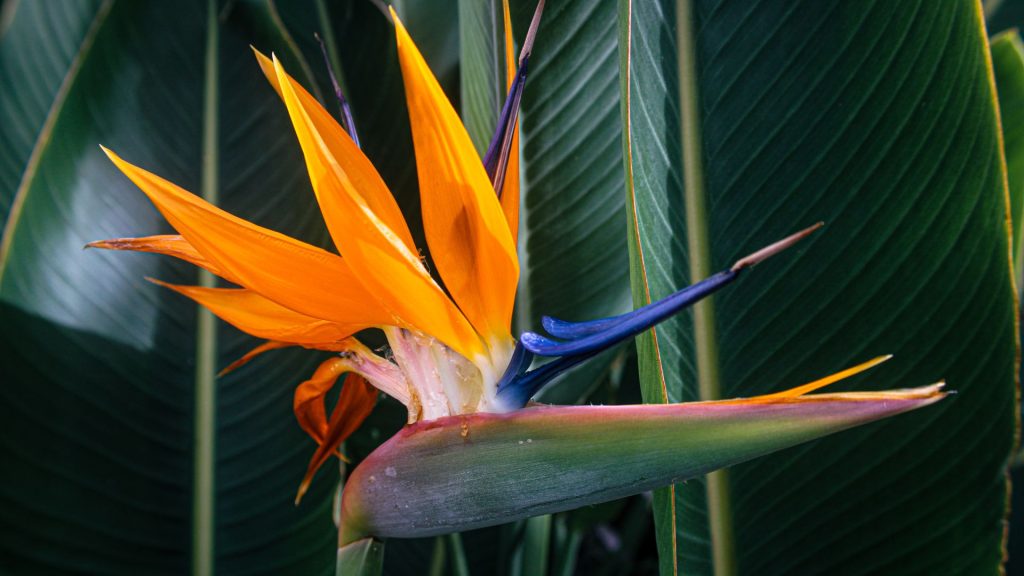
The Bird of Paradise is an exotic plant known for its stunning, bird-like flowers.
It brings a tropical vibe to indoor spaces and is relatively easy to care for if its light and humidity needs are met.
| Scientific Name | Strelitzia Reginae |
| Origin | South Africa |
| Light | Bright, indirect light |
| Temperature | 65-70°F (18-21°C) |
| Watering | Keep soil moist but not waterlogged |
| Soil | Well-draining, rich potting mix |
Fun Facts
- The flowers of the Bird of Paradise plant resemble a brightly colored bird in flight.
- It’s a symbol of paradise and freedom in its native region.
- Proper care allows the plant to bloom indoors, although it may take a few years.
9. Hibiscus (Hibiscus Rosa-Sinensis)
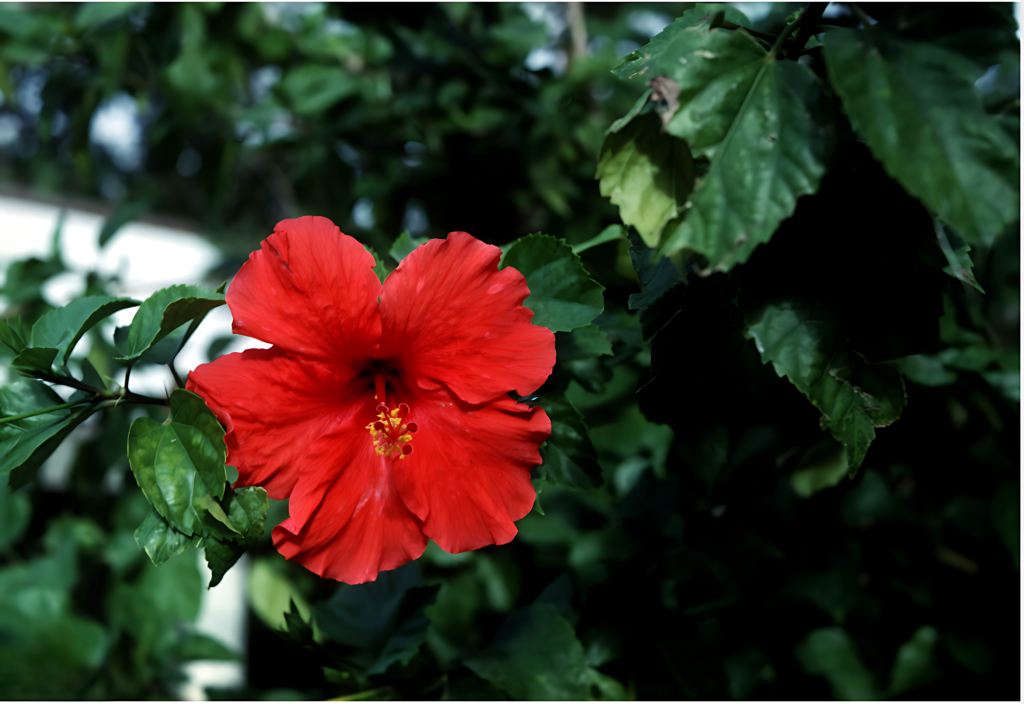
The Hibiscus plant is celebrated for its large, vibrant blooms and lush foliage. It’s a tropical plant that can flower year-round with the right conditions.
| Scientific Name | Hibiscus Rosa-Sinensis |
| Origin | Asia |
| Light | Bright, direct light |
| Temperature | 60-90°F (16-32°C) |
| Watering | Regular, keep the soil moist |
| Soil | Well-draining, acidic potting mix |
Fun Facts
- Hibiscus flowers can be used to make herbal tea rich in vitamin C.
- The blooms typically last only one day, but new flowers open daily during the blooming season.
- The plant is often used in traditional medicine in various cultures.
10. Rubber Plant (Ficus Elastica)
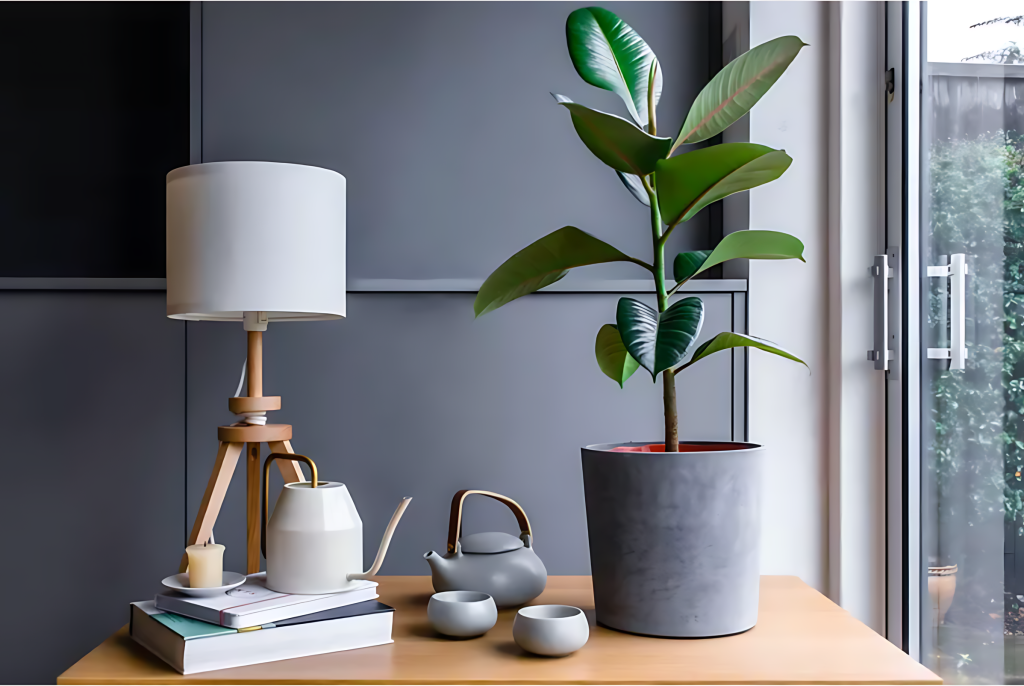
The Rubber Plant is a robust houseplant with large, glossy leaves that can add a touch of greenery to any indoor space. It’s known for its resilience and easy care.
| Scientific Name | Ficus Elastica |
| Origin | Southeast Asia |
| Light | Bright, indirect light |
| Temperature | 60-75°F (15-24°C) |
| Watering | Moderate, allow the soil to dry between watering |
| Soil | Well-draining, peat-based potting mix |
Fun Facts
- The Rubber Plant gets its name from the latex in its sap, which was once used to make rubber.
- It’s known for its ability to grow quite tall, up to 10 feet or more indoors.
- The plant effectively removes toxins from the air, such as formaldehyde.
11. Snake Plant (Sansevieria Trifasciata)
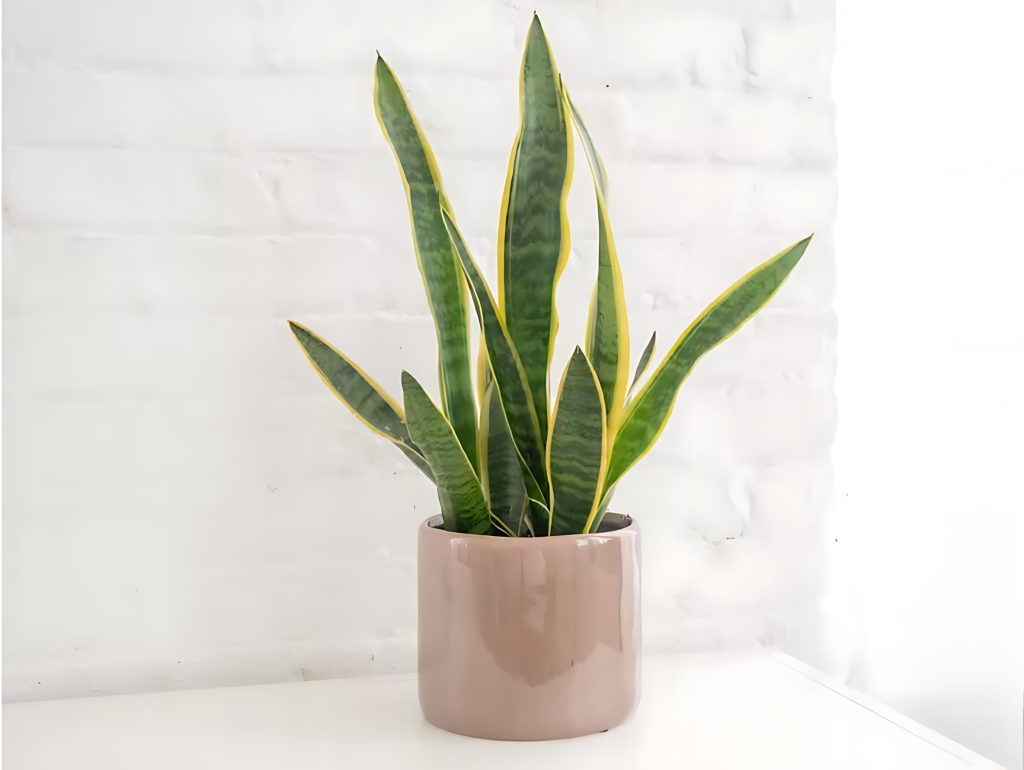
The Snake Plant, also known as Mother-in-Law’s Tongue, is incredibly hardy with upright, sword-like leaves.
It’s perfect for beginners due to its low maintenance needs.
| Scientific Name | Sansevieria Trifasciata |
| Origin | West Africa |
| Light | Low to bright, indirect light |
| Temperature | 60-75°F (15-24°C) |
| Watering | Infrequent, allow the soil to dry completely between watering |
| Soil | Well-draining, sandy potting mix |
Fun Facts
- The Snake Plant is known for its air-purifying qualities, particularly in removing toxins like formaldehyde and benzene.
- It’s often recommended for improving indoor air quality as it converts CO2 into oxygen at night.
- The plant is nearly indestructible and can survive neglect.
12. Philodendron (Philodendron Scandens)
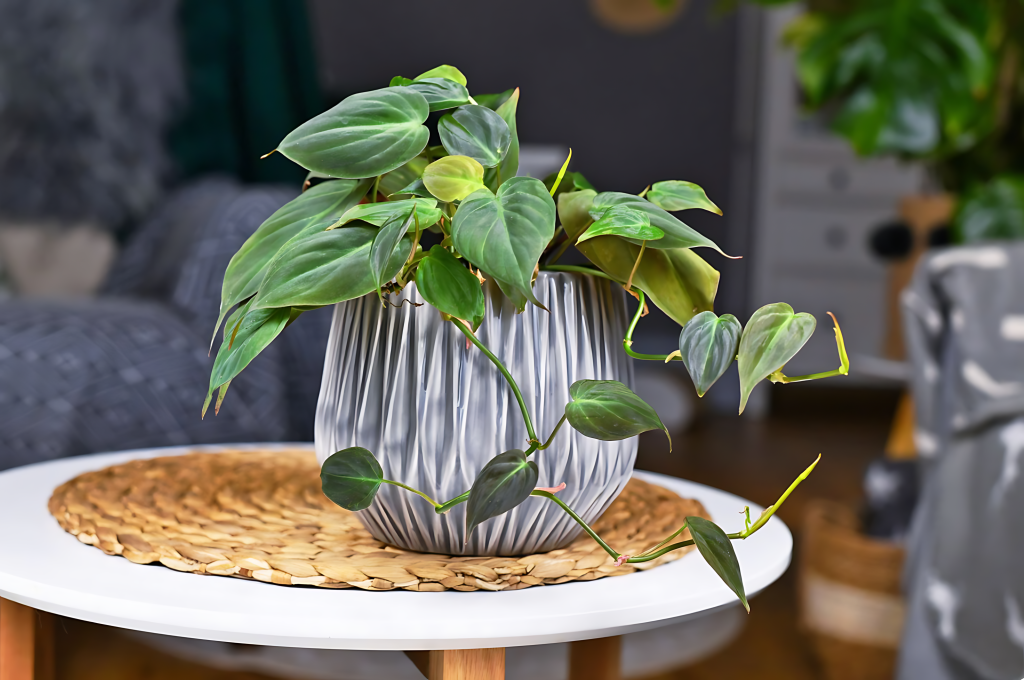
The Philodendron is a versatile houseplant with heart-shaped leaves that can either trail or climb.
It’s known for its easy care and adaptability to various light conditions.
| Attribute | Details |
|---|---|
| Scientific Name | Philodendron Scandens |
| Origin | Central and South America |
| Light | Low to bright, indirect light |
| Temperature | 65-80°F (18-27°C) |
| Watering | Moderate, allow the soil to dry between watering |
| Soil | Well-draining, peat-based potting mix |
Fun Facts
- Philodendrons are one of the best houseplants for purifying indoor air.
- They are fast-growing and can be easily propagated through cuttings.
- The plant’s name comes from the Greek words “philo” (love) and “dendron” (tree).
13. Aloe Vera (Aloe)
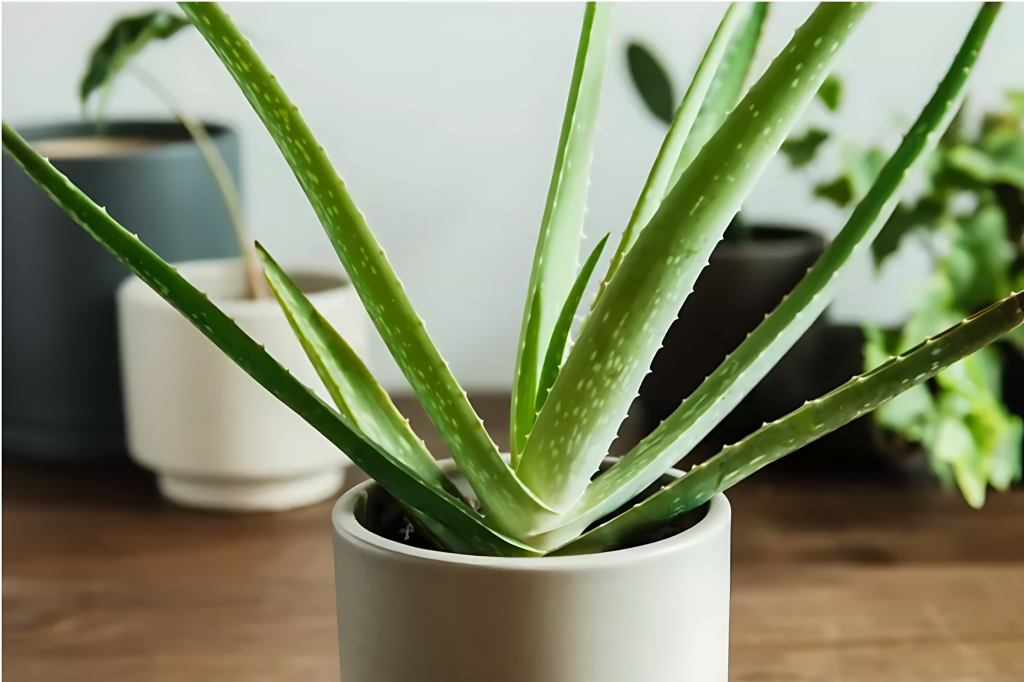
Aloe Vera is a succulent known for its medicinal properties and fleshy, spiked leaves.
It’s an easy-to-grow plant that thrives in bright light and minimal care.
| Attribute | Details |
|---|---|
| Scientific Name | Aloe Vera |
| Origin | Arabian Peninsula |
| Light | Bright, indirect light |
| Temperature | 55-80°F (13-27°C) |
| Watering | Minimal, allow soil to dry between watering |
| Soil | Well-draining, sandy potting mix |
Fun Facts
- Aloe Vera gel is widely used for its soothing properties on burns and skin irritations.
- The plant can grow both indoors and outdoors, making it very versatile.
- Aloe Vera is believed to help improve air quality by removing toxins.
14. Jade Plant (Crassula Ovata)
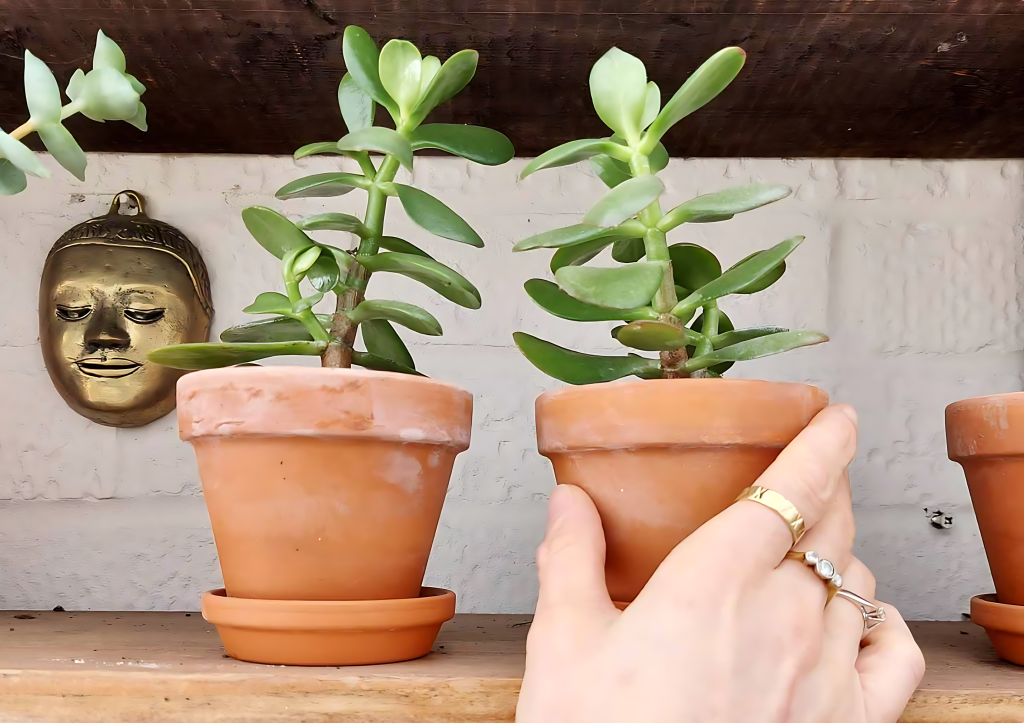
The Jade Plant is a popular succulent with thick, glossy leaves that store water.
It’s known for its longevity and is often considered a symbol of good luck.
| Scientific Name | Crassula Ovata |
| Origin | South Africa |
| Light | Bright, indirect light |
| Temperature | 65-75°F (18-24°C) |
| Watering | Minimal, allow soil to dry between watering |
| Soil | Well-draining, succulent potting mix |
Fun Facts
- Jade Plants are often given as gifts to bring good fortune and prosperity.
- They can live for many years, sometimes over a century.
- The plant can develop a tree-like appearance with age, adding to its ornamental value.
15. Maidenhair Fern (Adiantum Raddianum)
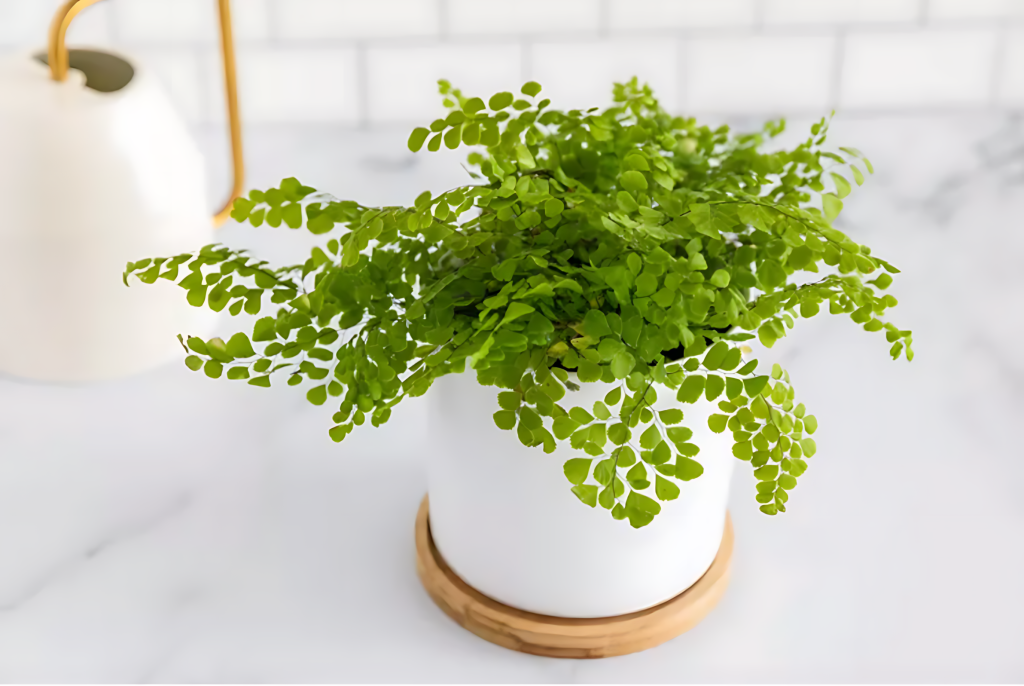
The Maidenhair Fern is an elegant houseplant with delicate, feathery fronds.
It’s known for its beauty and preference for humid environments.
| Scientific Name | Adiantum Raddianum |
| Origin | South America |
| Light | Low to medium light |
| Temperature | 60-75°F (15-24°C) |
| Watering | Keep soil consistently moist |
| Soil | Well-draining, peat-based potting mix |
Fun Facts
- Maidenhair Ferns are named for their fine, hair-like stems.
- They are often used in floral arrangements due to their delicate appearance.
- The plant thrives in humid conditions, making it ideal for bathrooms.
16. Boston Fern (Nephrolepis Exaltata)
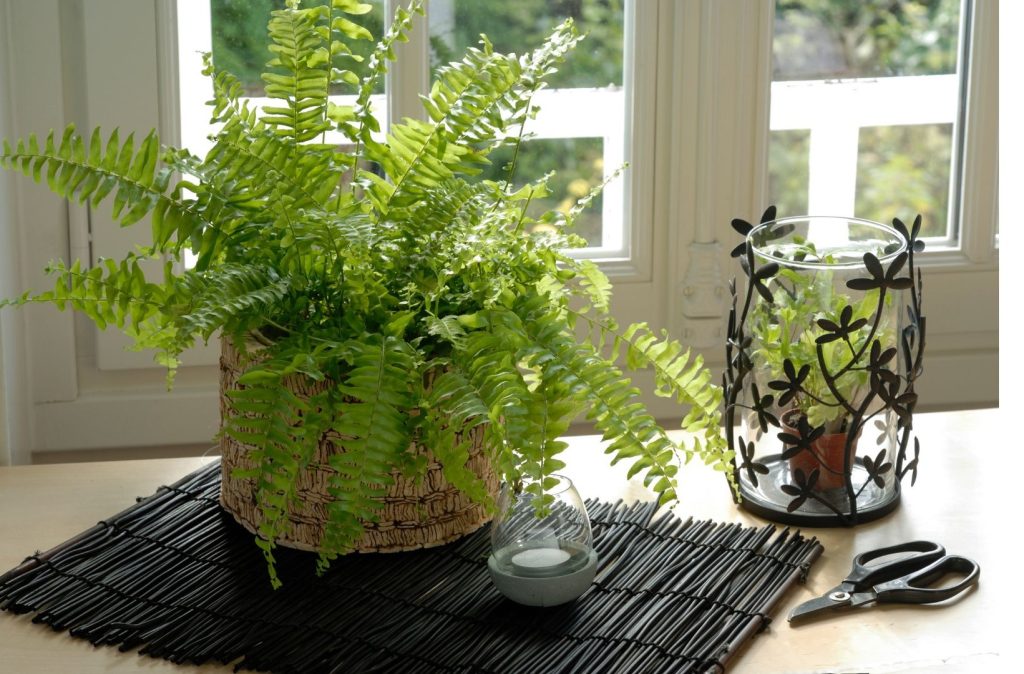
The Boston Fern is a lush, green fern with arching fronds that create a full and vibrant appearance.
It’s known for its air-purifying properties and ease of care.
| Scientific Name | Nephrolepis Exaltata |
| Origin | Tropical regions worldwide |
| Light | Indirect light |
| Temperature | 60-75°F (15-24°C) |
| Watering | Keep soil consistently moist |
| Soil | Well-draining, rich potting mix |
Fun Facts
- Boston Ferns are excellent at removing pollutants from the air, such as formaldehyde.
- They are often used as hanging plants due to their cascading fronds.
- The plant was popularized during the Victorian era and remains a classic choice for indoor greenery.
17. Chinese Evergreen (Aglaonema)

Chinese Evergreens are durable houseplants with variegated leaves that can thrive in low light conditions.
They are known for their ease of care and ability to adapt to various environments.
| Scientific Name | Aglaonema |
| Origin | Southeast Asia |
| Light | Low to bright, indirect light |
| Temperature | 60-75°F (15-24°C) |
| Watering | Moderate, allow soil to dry between watering |
| Soil | Well-draining, peat-based potting mix |
Fun Facts
- Chinese Evergreens are among the most popular houseplants for beginners.
- They are known for their long-lasting leaves that retain their color and vibrancy.
- The plant is believed to bring good luck and prosperity in Chinese culture.
18. Staghorn Fern (Platycerium Bifurcatum)

The Staghorn Fern is an epiphytic fern with fronds that resemble antlers. It’s often mounted on boards and hung on walls, creating a unique and decorative display.
| Scientific Name | Platycerium Bifurcatum |
| Origin | Australia, New Guinea |
| Light | Bright, indirect light |
| Temperature | 60-80°F (16-27°C) |
| Watering | Keep moist, mist regularly |
| Soil | Well-draining, orchid mix |
Fun Facts
- Staghorn Ferns grow on trees in their natural habitat, absorbing nutrients from the air and rain.
- The plant has two types of fronds: basal fronds that anchor it and fertile fronds that resemble antlers.
- It’s a popular choice for vertical gardening due to its unique growth habit.
19. Cast Iron Plant (Aspidistra Elatior)

The Cast Iron Plant is a hardy houseplant with broad, dark green leaves. It’s known for its ability to withstand neglect and low light conditions, making it an ideal choice for beginners.
| Scientific Name | Aspidistra Elatior |
| Origin | China, Japan |
| Light | Low to bright, indirect light |
| Temperature | 60-75°F (15-24°C) |
| Watering | Minimal, allow soil to dry between watering |
| Soil | Well-draining, all-purpose potting mix |
Fun Facts
- The Cast Iron Plant gets its name from its ability to thrive under the toughest conditions.
- It’s a popular choice for offices and commercial spaces due to its low maintenance needs.
- The plant can live for many years, often outlasting other houseplants in challenging environments.
20. String of Hearts (Ceropegia Woodii)
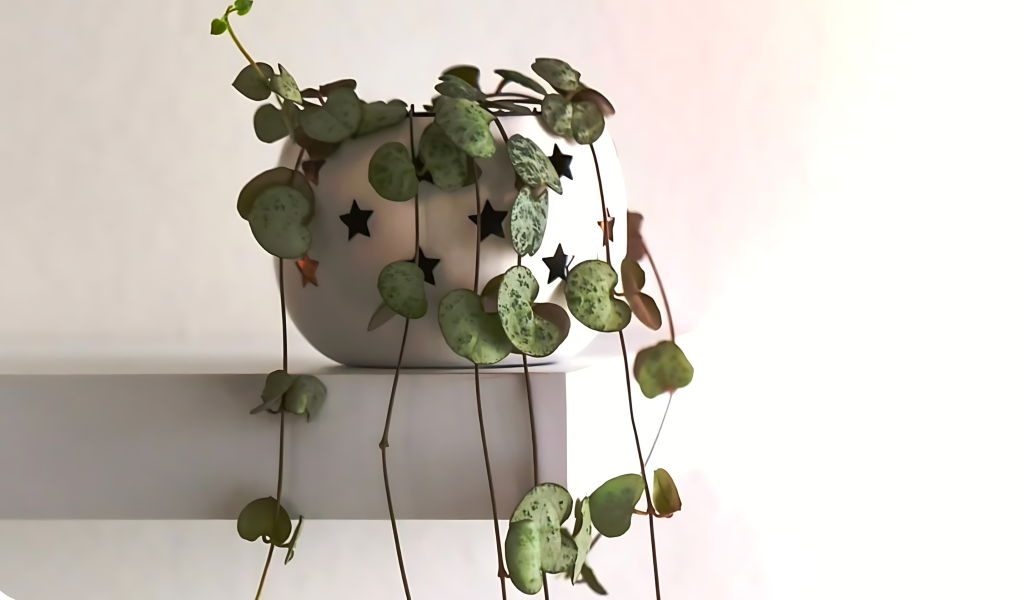
The String of Hearts is a trailing plant with delicate, heart-shaped leaves and slender stems. It’s loved for its unique appearance and fast growth.
| Scientific Name | Ceropegia Woodii |
| Origin | South Africa |
| Light | Bright, indirect light |
| Temperature | 60-75°F (15-24°C) |
| Watering | Allow soil to dry between watering |
| Soil | Well-draining, cactus mix |
Fun Facts
- The String of Hearts can grow up to 6 feet long in one growing season.
- It’s also known as “Rosary Vine” due to its bead-like tubers.
- The plant produces small, tubular flowers that resemble tiny lanterns.
21. Peperomia (Peperomia Obtusifolia)
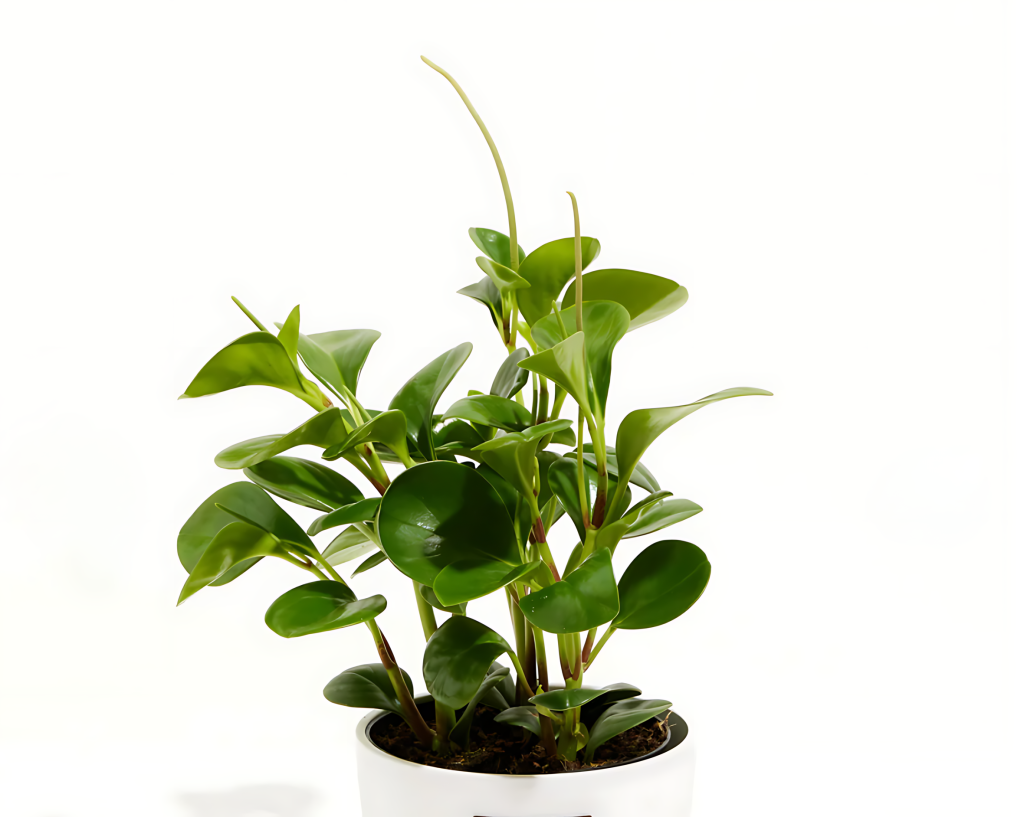
Peperomia Obtusifolia, also known as the Baby Rubber Plant, is a compact houseplant with thick, glossy leaves.
It’s easy to care for and adds a touch of greenery to any space.
| Scientific Name | Peperomia Obtusifolia |
| Origin | South America |
| Light | Bright, indirect light |
| Temperature | 65-75°F (18-24°C) |
| Watering | Moderate, allow soil to dry between watering |
| Soil | Well-draining, peat-based potting mix |
Fun Facts
- Peperomia Obtusifolia is pet-friendly, making it a great choice for households with animals.
- The plant can produce small, white flowers on slender spikes.
- It’s known for its ability to tolerate lower light conditions.
22. Calathea (Calathea Ornata)
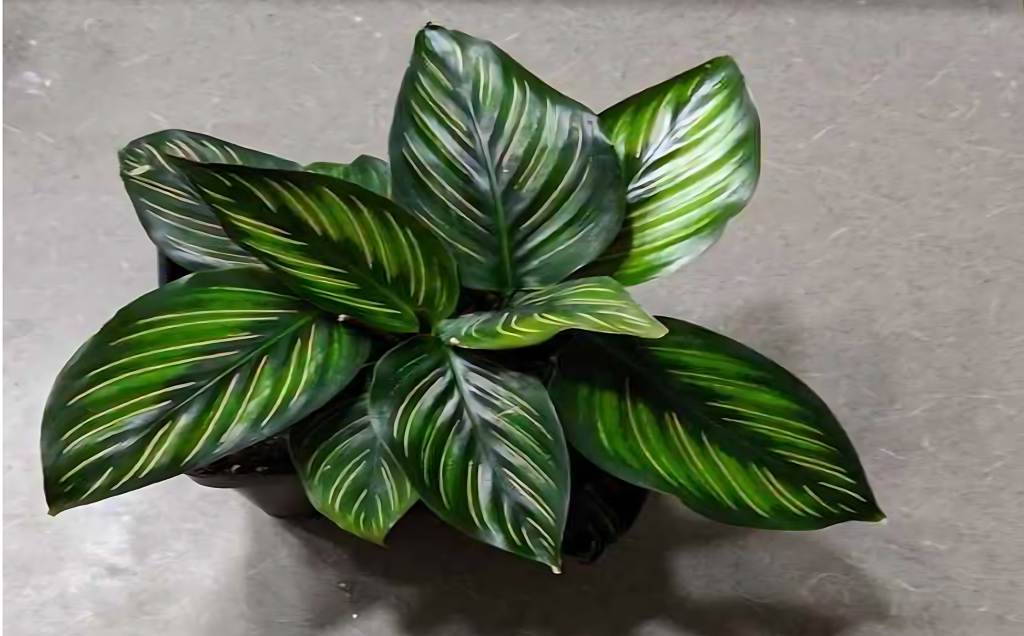
Calathea Ornata, known as the Pinstripe Plant, is admired for its striking, patterned leaves.
The leaves are dark green with pink or white stripes, creating a dramatic effect.
Table of Information
| Scientific Name | Calathea Ornata |
| Origin | South America |
| Light | Low to medium light |
| Temperature | 65-80°F (18-27°C) |
| Watering | Keep soil consistently moist |
| Soil | Well-draining, peat-based potting mix |
Fun Facts
- Calathea Ornata leaves fold up at night, a phenomenon known as nyctinasty.
- The plant is pet-friendly, making it safe for homes with pets.
- It thrives in high-humidity environments, making it ideal for bathrooms.
23. Ficus Benjamina (Weeping Fig)
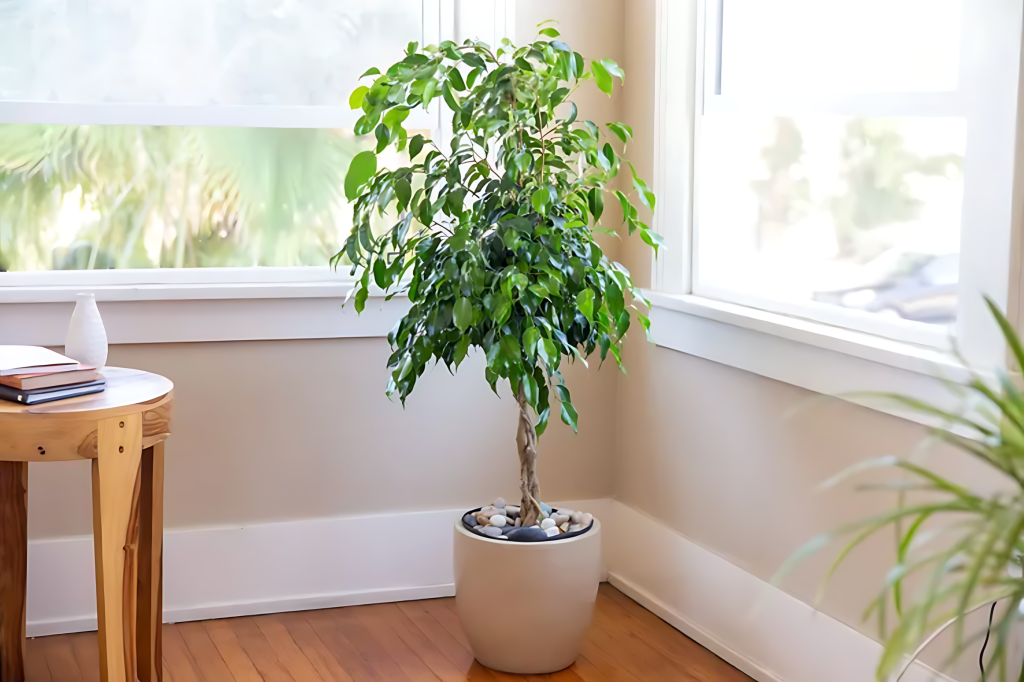
The Weeping Fig is a popular indoor tree with arching branches and glossy, pointed leaves. It’s a versatile plant that can be shaped into different forms, including bonsai.
| Scientific Name | Ficus Benjamina |
| Origin | Southeast Asia |
| Light | Bright, indirect light |
| Temperature | 60-75°F (15-24°C) |
| Watering | Moderate, allow the soil to dry between watering |
| Soil | Well-draining, peat-based potting mix |
Fun Facts
- The Weeping Fig can drop its leaves if moved or stressed, but it will recover with time.
- It’s known for its ability to improve indoor air quality by removing toxins.
- The plant can grow quite large indoors, reaching heights of up to 10 feet or more.
24. Bird’s Nest Fern (Asplenium Nidus)
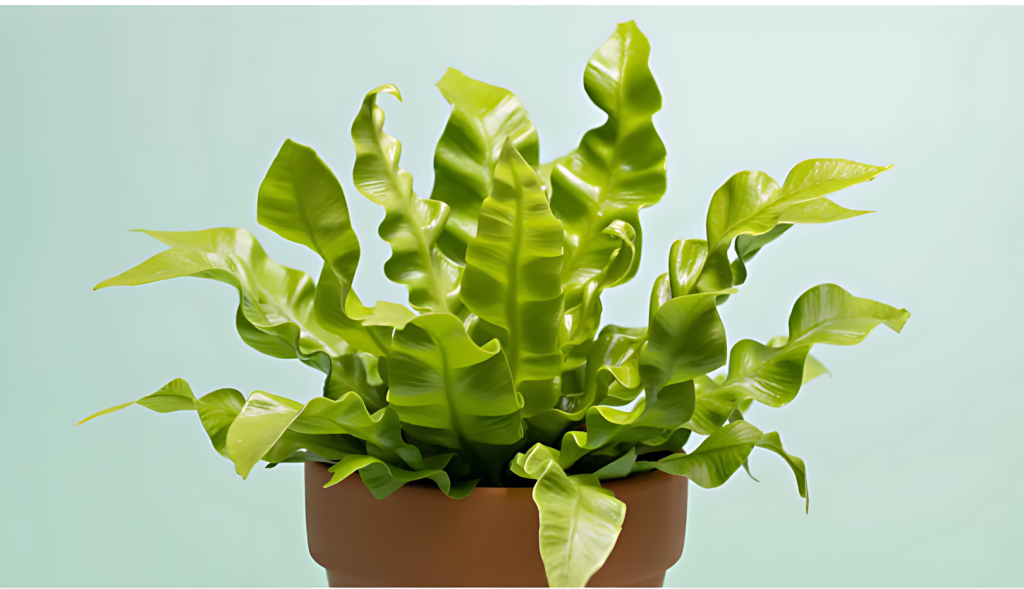
The Bird’s Nest Fern is a unique fern with broad, wavy fronds that form a rosette, resembling a bird’s nest.
It’s an excellent choice for adding a touch of greenery to shaded areas.
| Scientific Name | Asplenium Nidus |
| Origin | Southeast Asia, Australia |
| Light | Low to medium light |
| Temperature | 60-80°F (16-27°C) |
| Watering | Keep soil consistently moist |
| Soil | Well-draining, rich potting mix |
Fun Facts
- Bird’s Nest Ferns grow on trees in their natural habitat, absorbing nutrients from decaying matter.
- The plant’s fronds can grow up to 4 feet long in ideal conditions.
- It’s a popular choice for terrariums and shaded areas in homes.
25. Prayer Plant (Maranta Leuconeura)
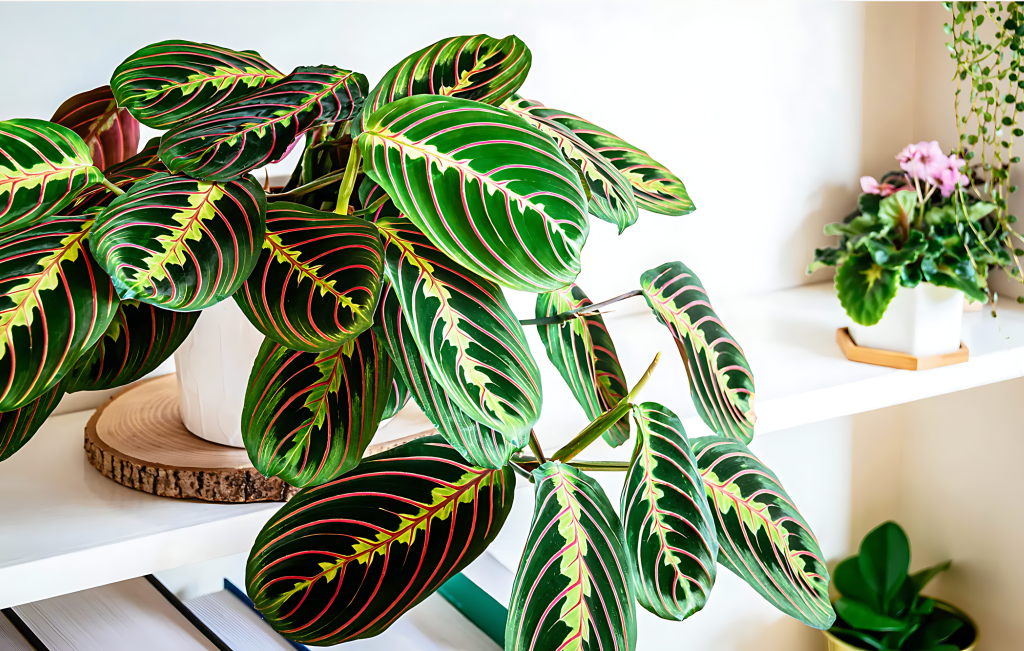
The Prayer Plant is known for its beautifully patterned leaves that fold up at night as if in prayer.
It’s a low-growing plant that thrives in high humidity and indirect light.
| Scientific Name | Maranta Leuconeura |
| Origin | Brazil |
| Light | Low to medium light |
| Temperature | 60-80°F (16-27°C) |
| Watering | Keep soil consistently moist |
| Soil | Well-draining, peat-based potting mix |
Fun Facts
- The Prayer Plant’s leaves move in response to light, a behavior known as nyctinasty.
- It’s pet-friendly, making it a safe choice for homes with animals.
- The plant can produce small, white flowers under the right conditions.
26. English Ivy (Hedera Helix)
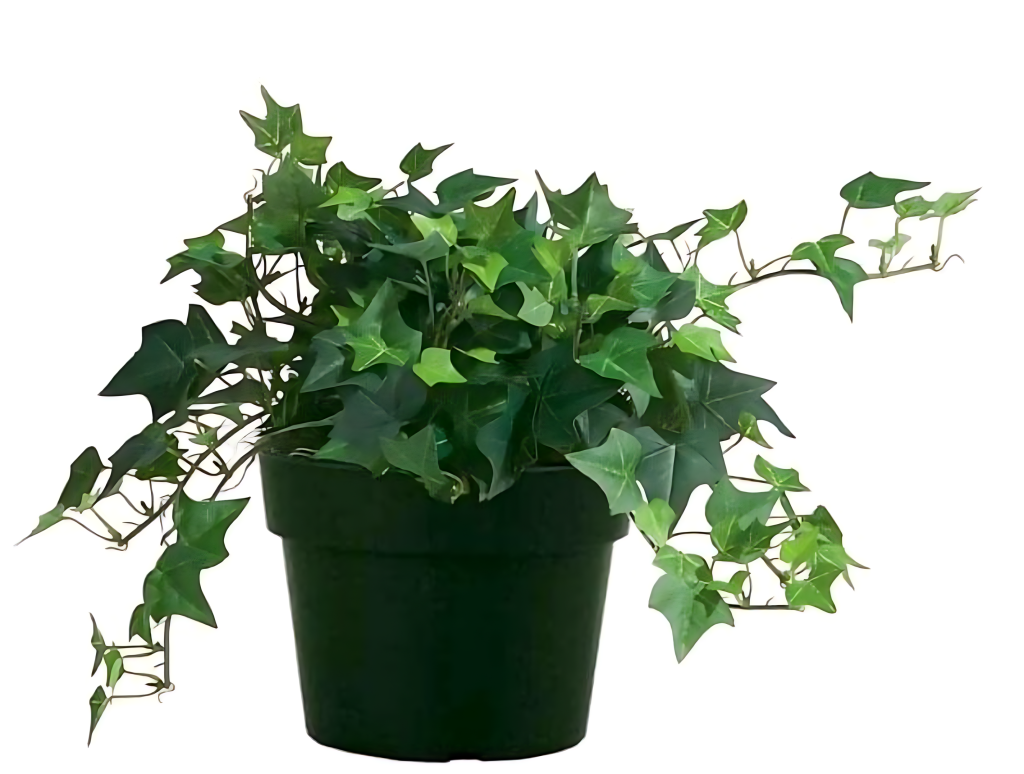
English Ivy is a versatile climbing or trailing plant with lobed leaves. It’s known for its rapid growth and ability to thrive in various light conditions.
| Scientific Name | Hedera Helix |
| Origin | Europe, Western Asia |
| Light | Low to bright, indirect light |
| Temperature | 50-70°F (10-21°C) |
| Watering | Moderate, allow the soil to dry between watering |
| Soil | Well-draining, all-purpose potting mix |
Fun Facts
- English Ivy effectively removes pollutants like benzene and formaldehyde from the air.
- It can be trained to climb trellises or cascade from hanging baskets.
- The plant is often used in topiary and decorative arrangements.
27. Cactus (Various Species)
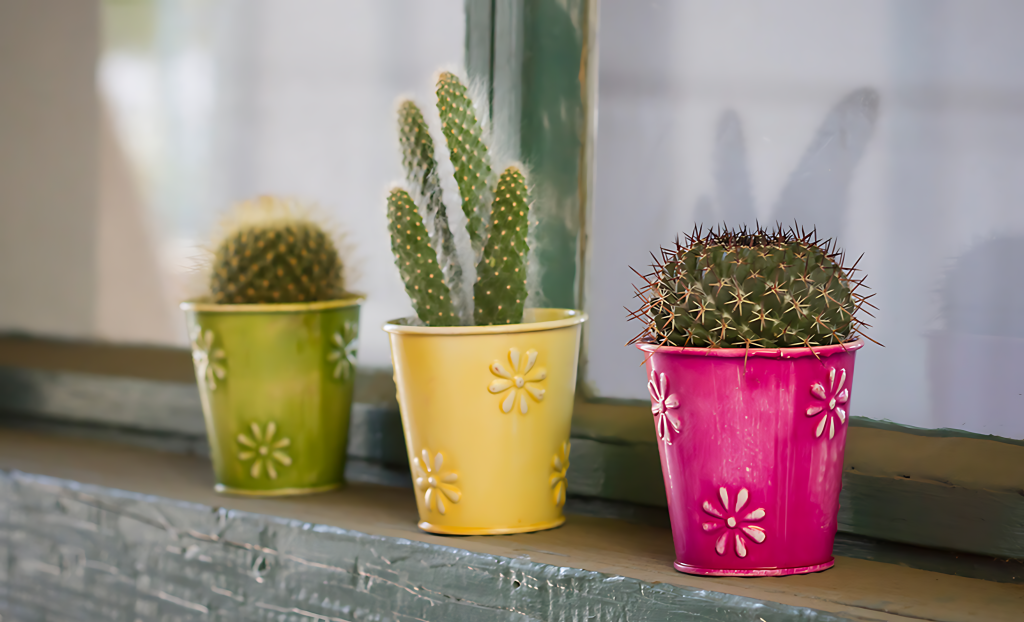
Cacti are a diverse group of succulents known for their spiny appearance and ability to store water. They are ideal for sunny spots and require minimal care.
| Attribute | Details |
|---|---|
| Scientific Name | Various Species |
| Origin | Americas |
| Light | Bright, direct light |
| Temperature | 60-85°F (16-29°C) |
| Watering | Minimal, allow soil to dry completely between watering |
| Soil | Well-draining, cactus mix |
Fun Facts
- Some cacti can live for decades, making them long-lasting additions to your home.
- They produce beautiful flowers, often with vibrant colors.
- Cacti have adapted to survive in some of the harshest environments on Earth.
28. Pothos (Epipremnum Aureum)

Pothos is a popular trailing plant with heart-shaped leaves in various colors and patterns.
It’s one of the easiest houseplants to grow and is very adaptable.
| Scientific Name | Epipremnum Aureum |
| Origin | Solomon Islands |
| Light | Low to bright, indirect light |
| Temperature | 65-85°F (18-29°C) |
| Watering | Moderate, allow soil to dry between watering |
| Soil | Well-draining, all-purpose potting mix |
Fun Facts
- Pothos is known as “Devil’s Ivy” because it can survive in near-darkness.
- It’s very effective at removing indoor pollutants like formaldehyde and benzene.
- The plant can grow up to 10 feet long indoors, making it a great trailing or climbing plant.
29. Hoya (Hoya Carnosa)
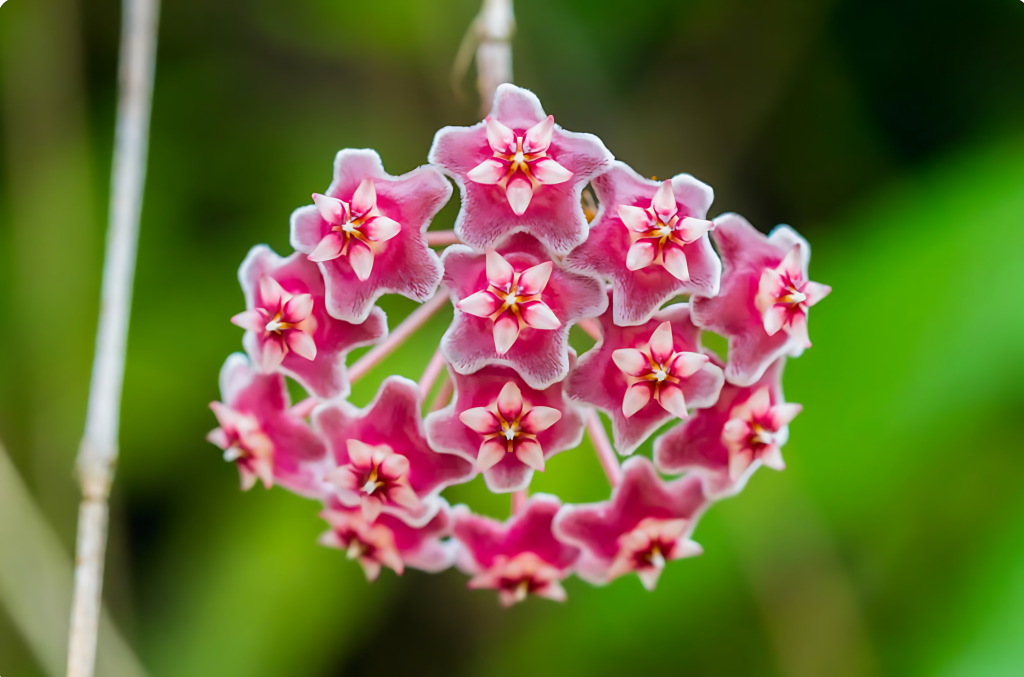
Hoya Carnosa, or the Wax Plant, is a vining plant with thick, waxy leaves and fragrant, star-shaped flowers.
It’s a favorite for its unique appearance and easy care.
| Scientific Name | Hoya Carnosa |
| Origin | Southeast Asia, Australia |
| Light | Bright, indirect light |
| Temperature | 60-85°F (16-29°C) |
| Watering | Moderate, allow soil to dry between watering |
| Soil | Well-draining, orchid mix |
Fun Facts
- Hoya Carnosa flowers produce a sweet fragrance, especially at night.
- The plant can live for many years, often passing from generation to generation.
- It’s known for its waxy leaves and flowers, which give it a distinctive look.
30. Umbrella Plant (Schefflera Arboricola)
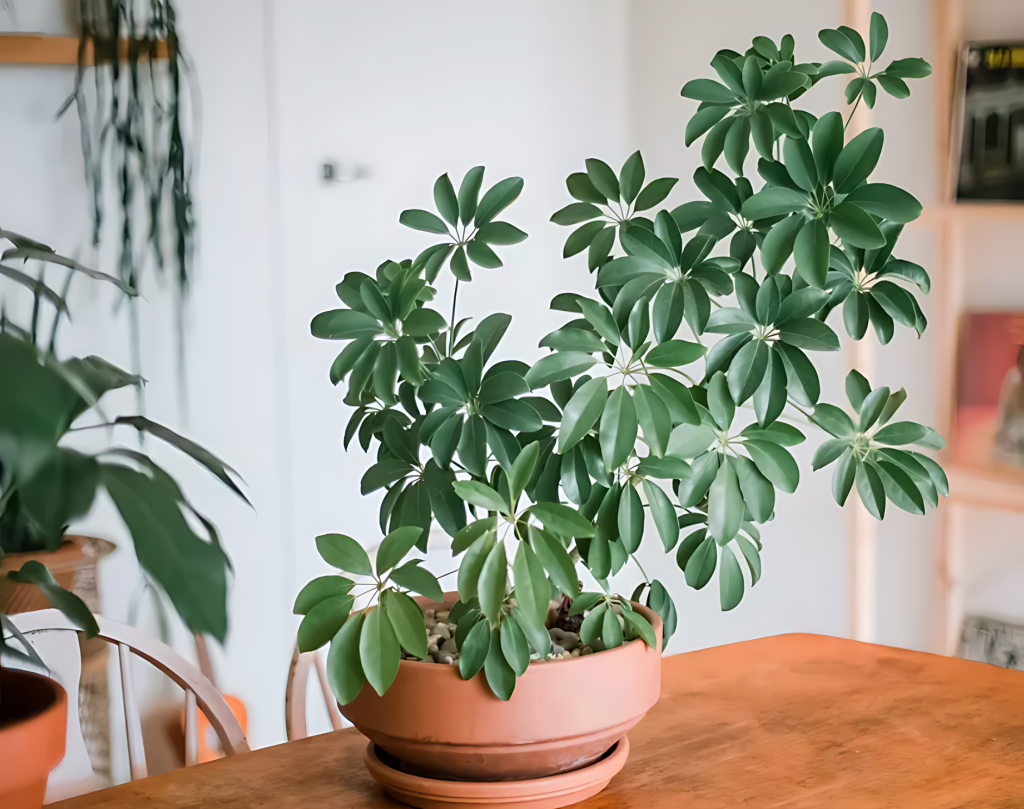
The Umbrella Plant, also known as Dwarf Schefflera, has shiny, hand-shaped leaves that form an umbrella-like pattern.
It’s a resilient and easy-to-care-for houseplant.
| Scientific Name | Schefflera Arboricola |
| Origin | Taiwan, Hainan |
| Light | Bright, indirect light |
| Temperature | 60-75°F (15-24°C) |
| Watering | Moderate, allow the soil to dry between watering |
| Soil | Well-draining, all-purpose potting mix |
Fun Facts
- The Umbrella Plant can be pruned to control its size and shape.
- It’s known for its ability to adapt to various indoor conditions.
- The plant can produce small, red flowers under the right conditions.
31. Arrowhead Plant (Syngonium Podophyllum)
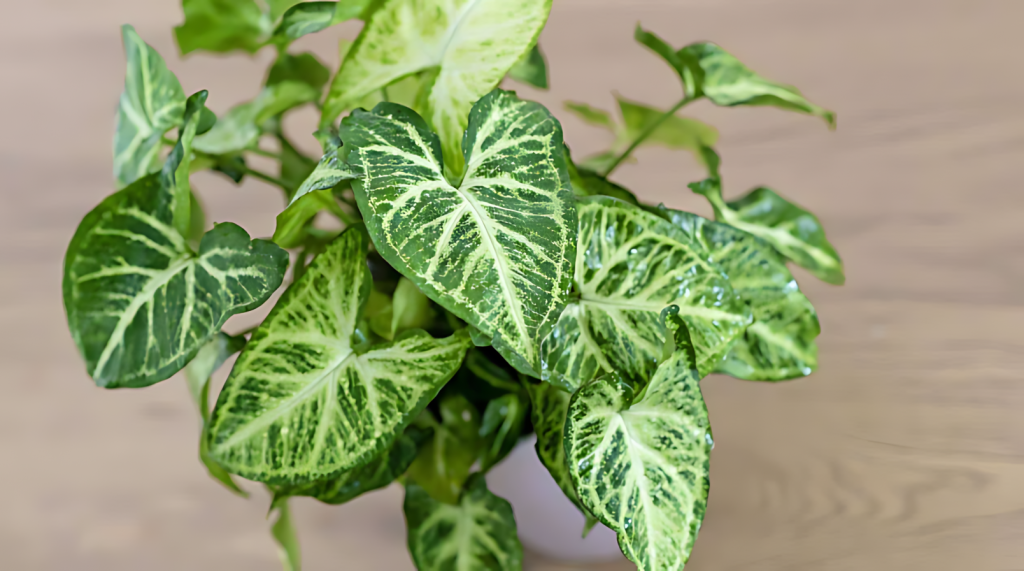
The Arrowhead Plant is a versatile houseplant with arrow-shaped leaves that change shape as the plant matures.
It’s easy to grow and can adapt to various light conditions.
| Scientific Name | Syngonium Podophyllum |
| Origin | Central and South America |
| Light | Low to bright, indirect light |
| Temperature | 60-75°F (15-24°C) |
| Watering | Moderate, allow soil to dry between watering |
| Soil | Well-draining, peat-based potting mix |
Fun Facts
- The Arrowhead Plant’s leaves change shape as they mature, starting as arrow-shaped and becoming more lobed.
- It’s also known as “Nephthytis” or “American Evergreen.”
- The plant can be trained to climb or trail, making it versatile for different growing spaces.
32. Lipstick Plant (Aeschynanthus Radicans)
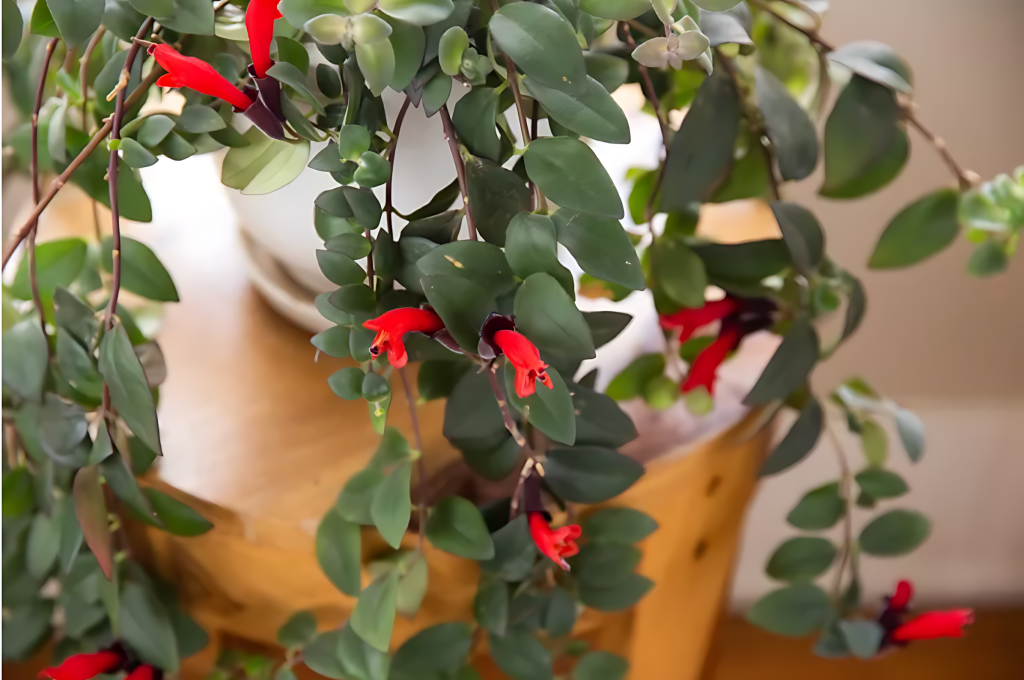
The Lipstick Plant is a trailing plant with tubular red flowers that emerge from dark-colored buds, resembling a tube of lipstick.
It’s an attractive and easy-to-care-for houseplant.
| Scientific Name | Aeschynanthus Radicans |
| Origin | Malaysia, Indonesia |
| Light | Bright, indirect light |
| Temperature | 60-80°F (16-27°C) |
| Watering | Moderate, allow the soil to dry between watering |
| Soil | Well-draining, peat-based potting mix |
Fun Facts
- The Lipstick Plant’s flowers look like miniature lipstick tubes, hence the name.
- It’s an excellent choice for hanging baskets due to its trailing habit.
- The plant can bloom multiple times a year if given the right conditions.
Conclusion
Hopefully, this journey through the world of indoor plants has sparked interest in bringing more greenery into homes.
Caring for plants is a learning process, and making mistakes along the way is okay. Starting small, perhaps with one or two plants, allows for growing a collection as confidence increases.
Each new plant adds life and character to a space. Watching a plant thrive under one’s care brings unique satisfaction.
Why not consider picking up a new leafy friend soon? It could bring a refreshing change to any living area. These green additions can benefit homes (and perhaps even moods).
Happy Planting to All!





